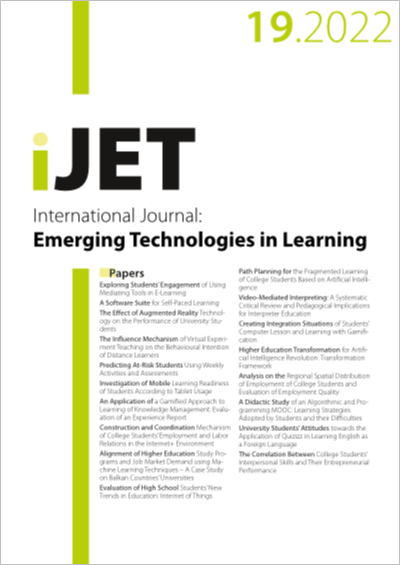Predicting At-Risk Students Using Weekly Activities and Assessments
DOI:
https://doi.org/10.3991/ijet.v17i19.31349Keywords:
At-risk prediction, Distance LearningAbstract
Abstract— Although Online learning has been so popular especially during epidemic crisis, it has a drawback of high dropouts and low completion rates. Institutes search for ways to support their students learning and increase completion rates. Institutes will be able to predict students’ performances and make interventions on time if they have some analytical strategy. Yet, efficient prediction and proactive intervention depends on using meaningful, reliable, and accurate data. Institutes different tools like Virtual Learning Environment (VLE) for teaching and content delivery. These tools provide large databases that are useful to improve prediction of students’ performance research. In this study, an Open University course VLE data is analyzed to investigate if weekly engagement alone, integrated with assessments scores (first approach), and accumulated previous assessments up to a certain week data ((second approach) lead to accurate student performance prediction. Importance of VLE data is highlighted here, which sheds light on students’ haviour and leads to developing models that can predict student’s outcome accurately. Second approach generated robust prediction models which outperformed the results obtained using first approach.
Downloads
Published
How to Cite
Issue
Section
License
Copyright (c) 2022 Moohanad Jawthari

This work is licensed under a Creative Commons Attribution 4.0 International License.


